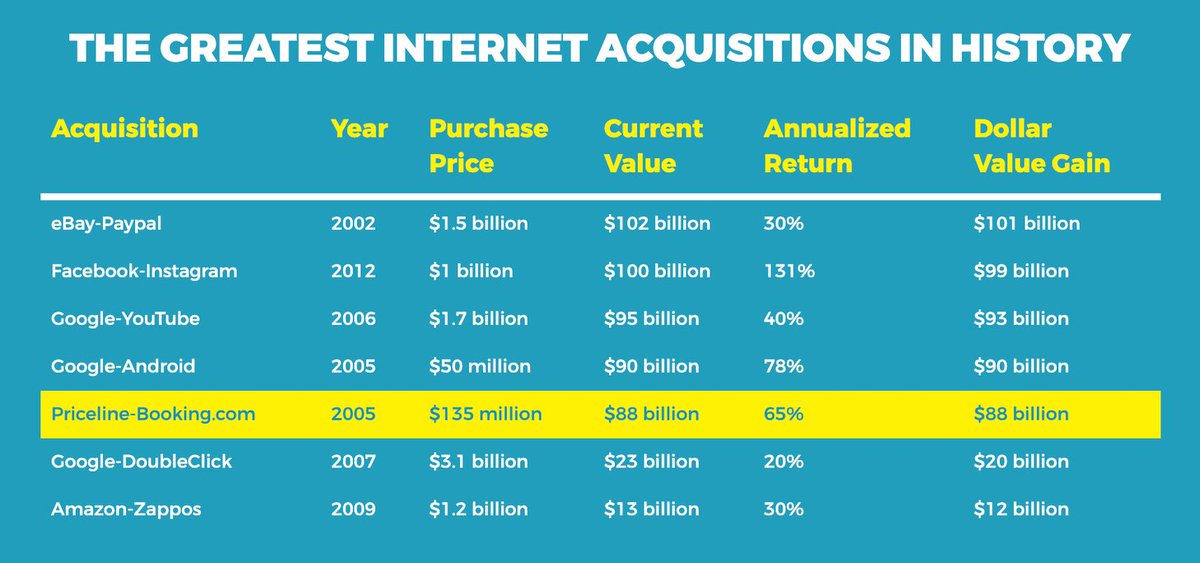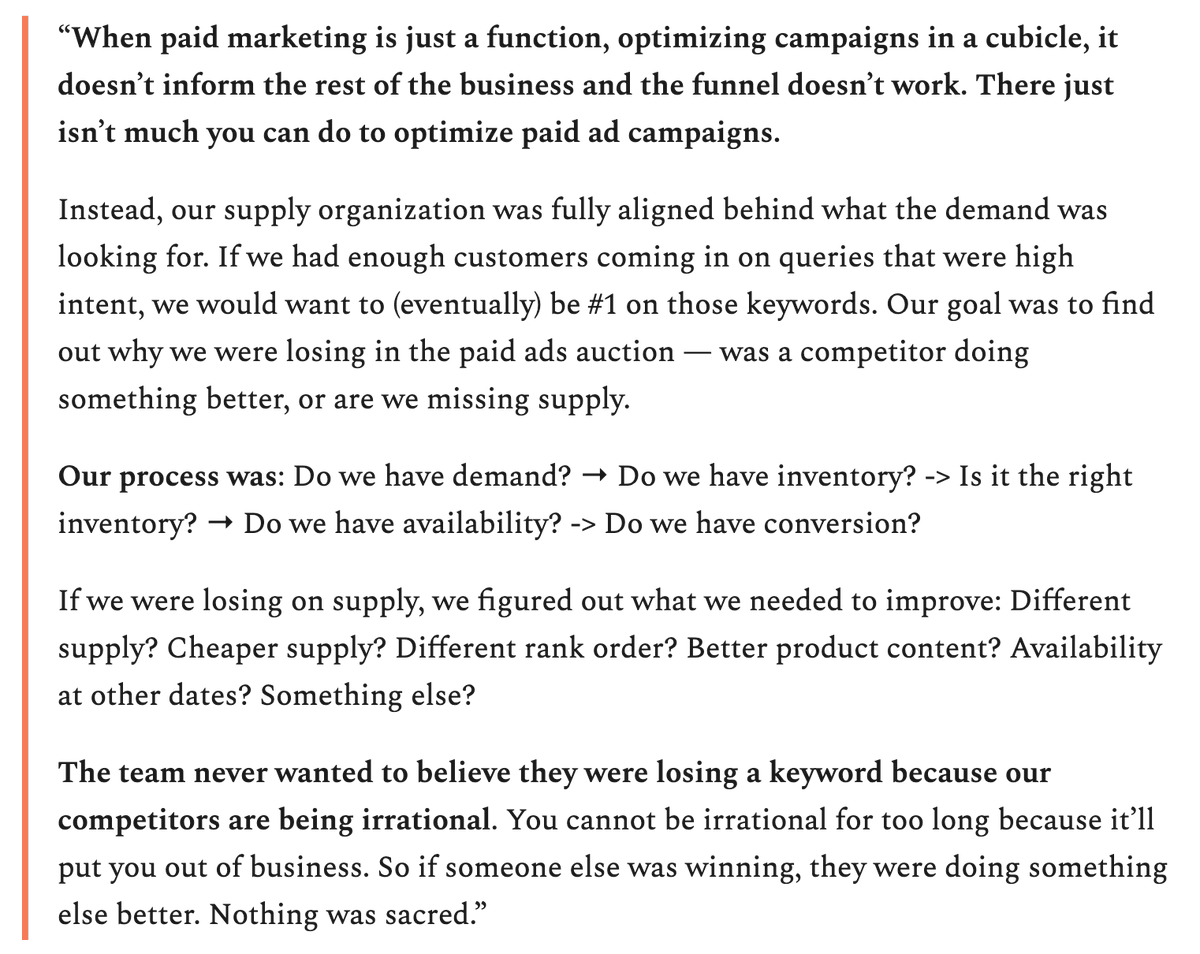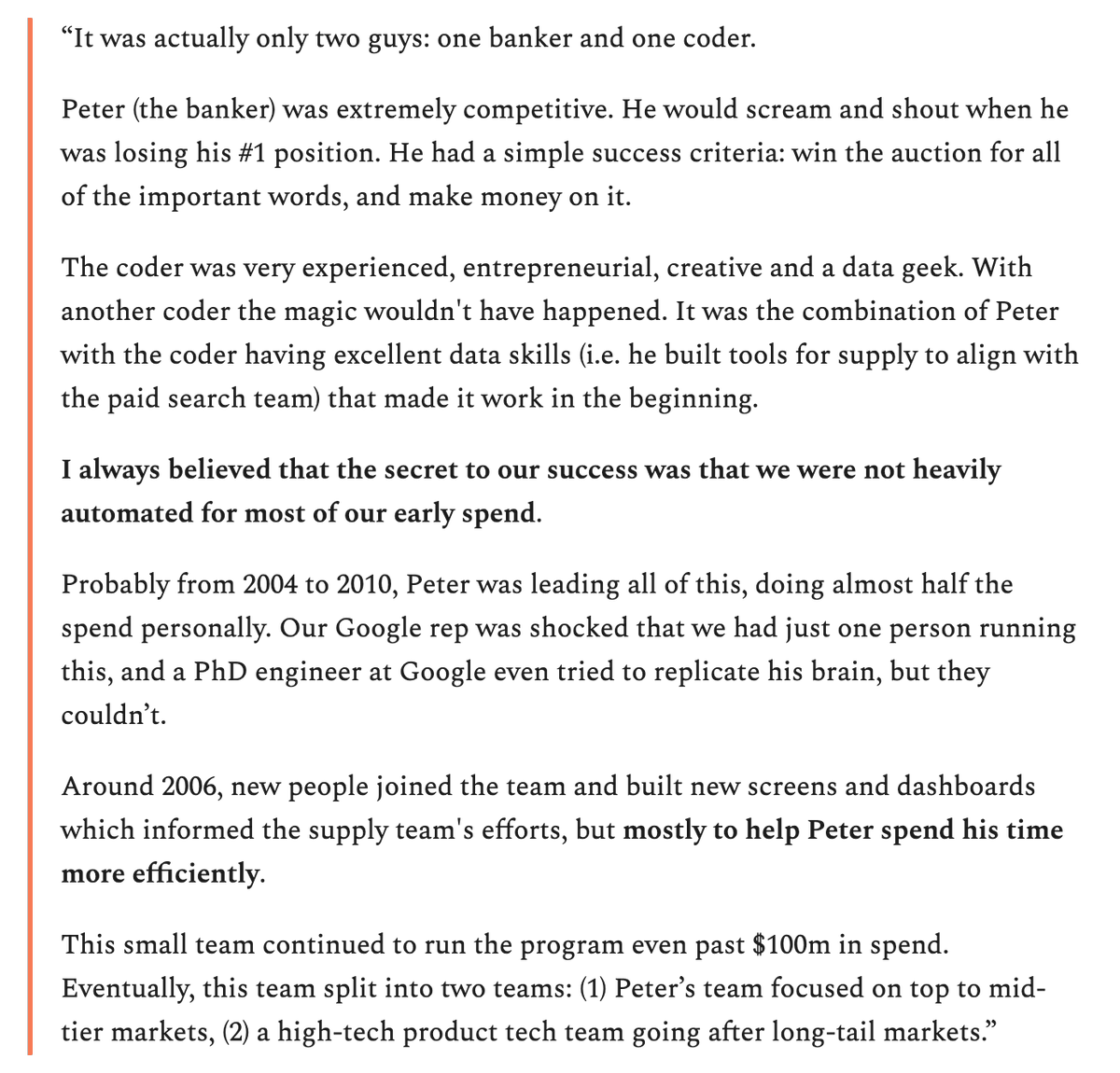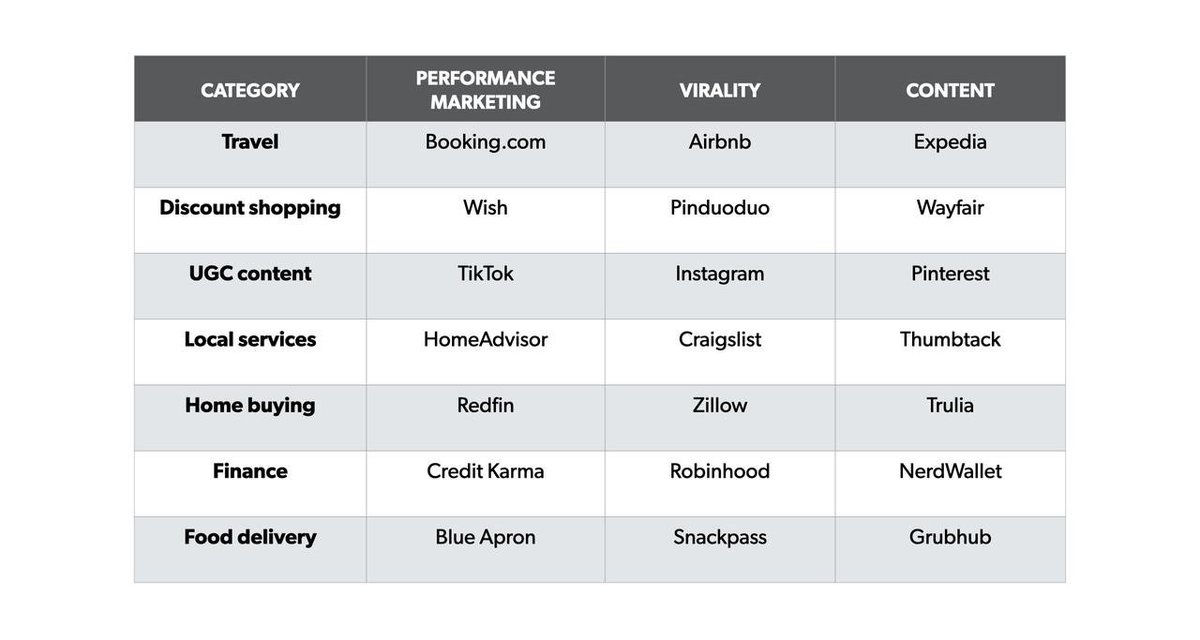
💥 New post 💥
How to Price Your SaaS Product, by @Patticus
Inside:
✔️ The 2 foundational elements of pricing strategy
✔️ Determining what axis to price on
✔️ Plug-and-play templates
✔️ Tons of examples
✔️ Bonus advice
Summary in thread below 👇
lennyrachitsky.com/p/saas-pricing…
How to Price Your SaaS Product, by @Patticus
Inside:
✔️ The 2 foundational elements of pricing strategy
✔️ Determining what axis to price on
✔️ Plug-and-play templates
✔️ Tons of examples
✔️ Bonus advice
Summary in thread below 👇
lennyrachitsky.com/p/saas-pricing…
1/ Last month I asked y'all who the smartest person on pricing is
https://twitter.com/lennysan/status/1289330367606829056
2/ Many suggestions came though but one name came up again and again: @Patticus
With the slightest of prods, Patrick agreed to write a guest post answering a question I've received almost more than any other: How do I price my SaaS product?
What follows is Patrick's advice 🙌
With the slightest of prods, Patrick agreed to write a guest post answering a question I've received almost more than any other: How do I price my SaaS product?
What follows is Patrick's advice 🙌

3/ In the beginning, the actual number you're charging isn't that important.
There are some exceptions, but for the most part, you should first be figuring out the range you're in: a $10 product, $100 product, $1k product, etc. Don't waste time debating $500 vs. $505.
There are some exceptions, but for the most part, you should first be figuring out the range you're in: a $10 product, $100 product, $1k product, etc. Don't waste time debating $500 vs. $505.
4/ What matters much more is two foundational elements:
1. Your value metric
2. Your ideal customer profiles and segments
With these, you can begin to experiment with your pricing.
1. Your value metric
2. Your ideal customer profiles and segments
With these, you can begin to experiment with your pricing.
5/ Step 1: Determine your value metric
A “value metric” is essentially what you charge for. For example: per seat, per 1,000 visits, per CPA, per transaction, etc. If you get everything else wrong in pricing, but you get your value metric right you'll do ok. It's that important.
A “value metric” is essentially what you charge for. For example: per seat, per 1,000 visits, per CPA, per transaction, etc. If you get everything else wrong in pricing, but you get your value metric right you'll do ok. It's that important.
6/ Pricing based on a value metric (vs. a tiered monthly fee) is important because it allows you to make sure you're not charging a large customer the same as you'd charge a small customer. 





7/ How to determine your value metric:
Think about the ideal essence of value for your product — what value are you directly providing your customer?
In B2B, it's likely going to be money saved, revenue gained, time saved, etc. In DTC, it may be the joy you bring them, ...
Think about the ideal essence of value for your product — what value are you directly providing your customer?
In B2B, it's likely going to be money saved, revenue gained, time saved, etc. In DTC, it may be the joy you bring them, ...
8/ fitness achieved, increased efficiency, etc. Obviously, we can't measure all of these, but if you can, and your customer trusts your measurement (meaning you say you saved them $100 and they agree you saved them $100), that’s your value metric.
9/ As an example, the perfect value metric for ProfitWell Retain (our churn recovery product) is how much churn we recover for you. We can measure this, and our customers agree to the measurement, so we can charge on that axis. Other pure value metric products include... 

10/ Most of you won't have a pure value metric, so the next step is to find a proxy for that metric. To find the right proxy metric, you want to come up with 5-10 proxies and then talk to your customers and prospects. You’ll typically find 1-2 of these pricing metrics...
11/ will be most preferred amongst your target customers. You then want to make sure those 1-2 also make sense from a growth perspective. Your larger customers should be using/getting more of the metric, whereas your smaller customers should be using/getting less of the metric.
12/ Step 2: Determine your customer profiles and segments
Most personas are useless because they aren’t quantitative enough. When used properly, quantified personas and segments are beautiful tools. The information needs to go beyond just cute names like “Startup Steve," with...
Most personas are useless because they aren’t quantitative enough. When used properly, quantified personas and segments are beautiful tools. The information needs to go beyond just cute names like “Startup Steve," with...
13/ a cute avatar, and cute meetings where people tell you their targeting "developers".
To get quantified personas, you need to pull out a spreadsheet. Here’s a template you can use.
docs.google.com/spreadsheets/d…
To get quantified personas, you need to pull out a spreadsheet. Here’s a template you can use.
docs.google.com/spreadsheets/d…
14/ Columns: Customer profiles you're targeting
These can take many forms, but the ultimate goal is to be as specific as possible so that you not only know who you’re targeting but how to monetize and retain them.
These can take many forms, but the ultimate goal is to be as specific as possible so that you not only know who you’re targeting but how to monetize and retain them.

16/ If you don't know who your key roles/segments are, there's no way in hell you’ll set up an efficient growth flywheel, let alone an optimized pricing strategy. Personas act as a constitution within your business to centralize your focus and arguments about direction.
17/ Step 3: User research + experimentation
Beyond your value metric and core segments, the monetization game becomes extremely tactical and research-based. Figuring out your price point involves researching those segments and then making decisions in the field.
Beyond your value metric and core segments, the monetization game becomes extremely tactical and research-based. Figuring out your price point involves researching those segments and then making decisions in the field.
18/ Practically this is why you should be experimenting with your monetization every quarter.
Here’s a good prioritization list of what you should attack in optimizing your monetization strategy once you have your core segments and value metric figured out:
Here’s a good prioritization list of what you should attack in optimizing your monetization strategy once you have your core segments and value metric figured out:

19/ Bonus: Rapid-fire advice
1. You should localize your pricing to the currency and willingness to pay of the prospect's region
2. Freemium is an acquisition model, not a part of pricing
3. Value propositions matter oh so much
4. Don't discount over 20%
1. You should localize your pricing to the currency and willingness to pay of the prospect's region
2. Freemium is an acquisition model, not a part of pricing
3. Value propositions matter oh so much
4. Don't discount over 20%
20/
5. For upgrades to annual discounts don't use percentages and try offers
6. Should you end your price in 9s or 0s? Depends on your price point
7. You should experiment with your pricing in some manner every quarter
8. Case studies boost willingness to pay quite a bit
5. For upgrades to annual discounts don't use percentages and try offers
6. Should you end your price in 9s or 0s? Depends on your price point
7. You should experiment with your pricing in some manner every quarter
8. Case studies boost willingness to pay quite a bit
21/
9. Design helps boost willingness to pay by 20%
10. Integrations boost retention and willingness to pay
9. Design helps boost willingness to pay by 20%
10. Integrations boost retention and willingness to pay
22/ For much much more, don't miss the full post below.
ALSO, @Patticus will be doing an AMA in our subscriber-only Slack community at 5pm PT today. Come by to ask Patrick any question you have about pricing your product.
lennyrachitsky.com/p/saas-pricing…
ALSO, @Patticus will be doing an AMA in our subscriber-only Slack community at 5pm PT today. Come by to ask Patrick any question you have about pricing your product.
lennyrachitsky.com/p/saas-pricing…
• • •
Missing some Tweet in this thread? You can try to
force a refresh







